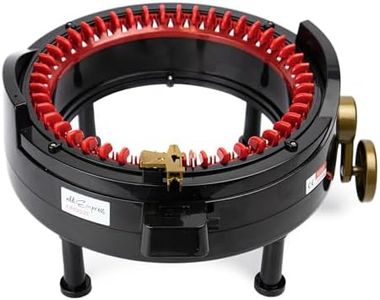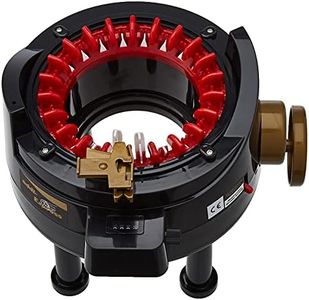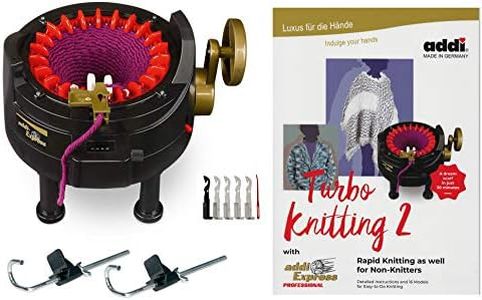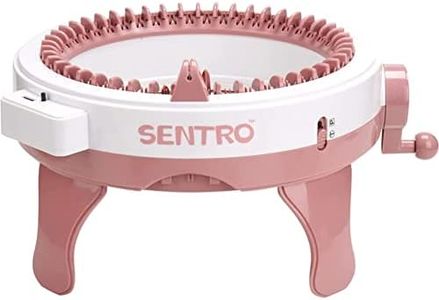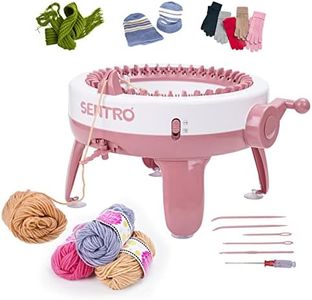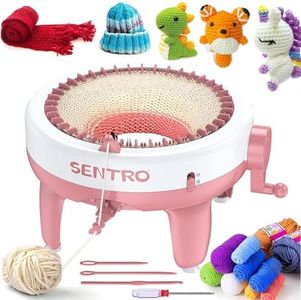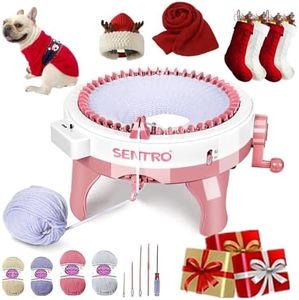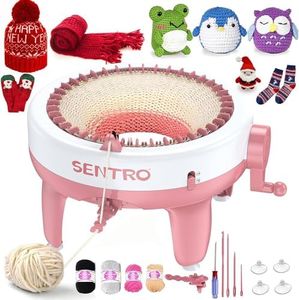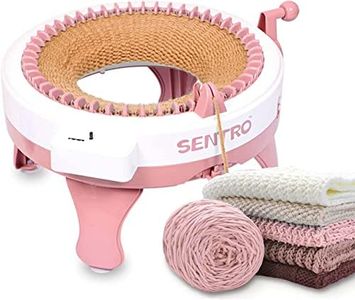We Use CookiesWe use cookies to enhance the security, performance,
functionality and for analytical and promotional activities. By continuing to browse this site you
are agreeing to our privacy policy
10 Best New Knitting Machines
From leading brands and best sellers available on the web.Buying Guide for the Best New Knitting Machines
Buying a new knitting machine can greatly expand your creative possibilities in knitting, making it easier and faster to craft everything from scarves to sweaters. To find your best fit, think about what you want to knit, how frequently you'll use it, your level of experience, and any special features you might need. Matching your machine to your planned projects and your comfort level will lead to a more satisfying purchase.Type (Flat Bed vs. Circular)The type of knitting machine refers to its main function and the types of items it can make. Flat bed machines are designed to knit flat pieces, great for panels, sweaters, and blankets, while circular machines knit tubes, making them good for hats, socks, and other cylindrical objects. Choose a flat bed if you're planning to make varied garments and patterns, or a circular machine for speed and simple tube-shaped pieces. Your decision should depend on the styles of knitting you enjoy most.
Number of Needles and Needle GaugeThe number of needles and the gauge determine the width of what you can knit and the thickness of yarn that can be used. More needles and finer gauge are suitable for delicate, detailed work and lightweight yarns; fewer needles and heavier gauge suit thicker yarns and chunkier results. If you want to knit fine garments, prioritize a finer gauge and more needles. If you prefer fast results with bulky yarns, a lower needle count and thicker gauge are better.
Manual vs. ElectronicManual machines rely on your hand movements to select stitches and patterns, which is ideal for those who enjoy hands-on crafting and have patience to work with simpler designs. Electronic machines can control stitch selection automatically, allowing for complex patterns and saving time. If you're tech-savvy or want to experiment with intricate designs, electronic models might be best. Manual machines are great for learning basics or enjoying a more traditional, tactile experience.
Pattern CapabilityPattern capability relates to how easily the machine can create different stitches and motifs. Some machines come with built-in patterns or punch cards, while others allow you to create your own designs. If you want more creative control and plan to explore varied stitch types, look for a machine with versatile pattern features. If you’re content with basic knitting, a simpler pattern system might be sufficient.
Yarn CompatibilityNot all machines handle every kind of yarn. Some are better for fine or synthetic yarns; others can handle chunky, natural fibers. Check what yarn types the machine accepts and match this to the yarns you most like to use in your projects. If you switch between many yarn types, choose a machine with greater compatibility.
Ease of Use and Learning CurveThe ease of use varies; some machines are straightforward for beginners, while others require more skill and patience to master. Features like clear instructions, automatic functions, and supporting materials can make starting out smoother. If you're new to machine knitting, consider a user-friendly option with good guides. If you’re experienced, you might appreciate a machine with more advanced features to match your skills.
Maintenance and DurabilityMaintenance requirements and durability will determine how much time you spend keeping your machine working smoothly and how long it will last. Look for machines made with sturdy parts and with a reputation for reliability. If you plan to knit often, invest in a model that can handle frequent use and is easy to keep clean and lubricated.


